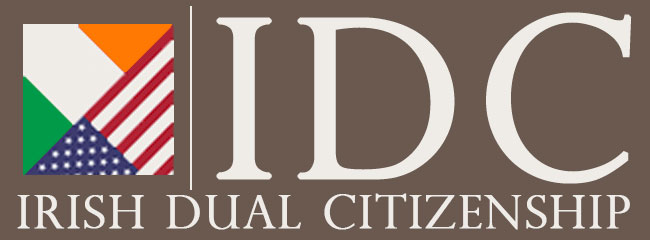Understanding the 1956 Irish Nationality and Citizenship Act
A COMPREHENSIVE BREAKDOWN OF THE 1956 NATIONALITY AND CITIZENSHIP ACT
The Irish Nationality and Citizenship Act of 1956 is a landmark piece of legislation that shaped modern Irish identity. It provided a structured framework for determining who qualifies as an Irish citizen, addressing birth, descent, naturalization, and dual citizenship issues. This law remains central to questions of belonging and legal rights for military, diplomatic, and diaspora communities.
Historical Context
Ireland declared independence in 1922, but questions of citizenship remained fragmented. Early legislation, such as the Irish Nationality and Citizenship Act of 1935, was limited in scope. By the mid-20th century, the government recognized the need for comprehensive reform.
The 1956 Irish Nationality and Citizenship Act consolidated nationality law and clarified citizenship rights for those born in Ireland, abroad, or as part of the Irish diaspora. It also recognized that Ireland’s future lay in balancing its sovereignty with the rights of citizens scattered worldwide.
Emigration was widespread at the time, and this law became a lifeline for maintaining ties with generations of Irish abroad while affirming the state’s authority to define citizenship.
Key Provisions
The 1956 law introduced several key mechanisms:
- Citizenship by Birth: Anyone born in Ireland automatically became a citizen, reflecting a broad jus soli principle.
- Citizenship by Descent: Children born outside of Ireland to Irish parents could claim citizenship, ensuring continuity for the diaspora.
- Foreign Births Register: Grandchildren and children of Irish citizens could apply for citizenship if they were listed in the Foreign Births Register.
- Naturalization: Residency requirements and character standards were outlined for foreign nationals looking to live in Ireland and become naturalized citizens.
- Dual Nationality: Irish citizens were allowed to hold dual citizenship without losing their Irish status.
These provisions anchored Ireland’s legal nationality system and offered flexible paths to citizenship for individuals with Irish heritage.
Amendments and Legal Evolution
The Irish Nationality and Citizenship Act has been amended several times to reflect changing social and legal realities:
- 1986: The law was updated to tighten citizenship rules, ending automatic citizenship through marriage, limiting citizenship granted through the Foreign Births Register to begin on the date of registration, and clarifying residency requirements for naturalization.
- 2001-2003: Nationality law was revised to reflect constitutional changes following the Good Friday Agreement.
- 2004: The 27th Amendment ended automatic birthright citizenship for all children born in Ireland, limiting it to children with at least one parent who meets residency or nationality requirements.
The Law Reform Commission maintains the consolidated, current version of the Irish Nationality and Citizenship Act that includes these changes. These amendments illustrate how the law remains a living framework, adapting to Ireland’s evolving role domestically and internationally.
Dual Citizenship and the Irish Diaspora
The Irish Nationality and Citizenship Act’s most significant long-term impact has been its embrace of dual nationality. This provision ensured that members of the Irish diaspora could get Irish citizenship without renouncing citizenship in their country of residence.
This legal principle has provided practical benefits to those who seek Irish citizenship, such as EU free movement rights. It also reinforced cultural connections for millions of Irish emigrants and their descendants in the United States, Canada, Australia, and the UK. These ties were amplified as Ireland’s cultural influence spread globally, from the worldwide popularity of Riverdance to St. Patrick’s Day celebrations becoming mainstream across continents. This wave of hibernization highlights how Irish traditions have been embraced internationally, often strengthened by the diaspora.
The Lasting Legacy of the 1956 Irish Nationality and Citizenship Act
The 1956 Irish Nationality and Citizenship Act is a cornerstone of Ireland’s legal and cultural identity. While its provisions have been amended to reflect political and social change, the law’s remains true to the core principles of protecting national sovereignty, connecting with the diaspora, and allowing for inclusive citizenship. This legislation represents a legal framework and a bridge to belonging, heritage, and opportunity for individuals with Irish descent or aspirations.
This page was last updated by Marco Permunian
Additional Irish resources:
- Foreign Birth Registration for Irish Citizenship
- Benefits of Holding Irish Citizenship
- How to Qualify for an Irish Passport
- Irish Citizenship by Marriage
- Get Help with Irish Dual Citizenship
- Can You Claim Irish Citizenship from Great-Grandparents?
- Citizenship Through Parents, Grandparents or Great-Grandparents
- Irish Citizenship by Descent
- How to Get Irish Citizenship


